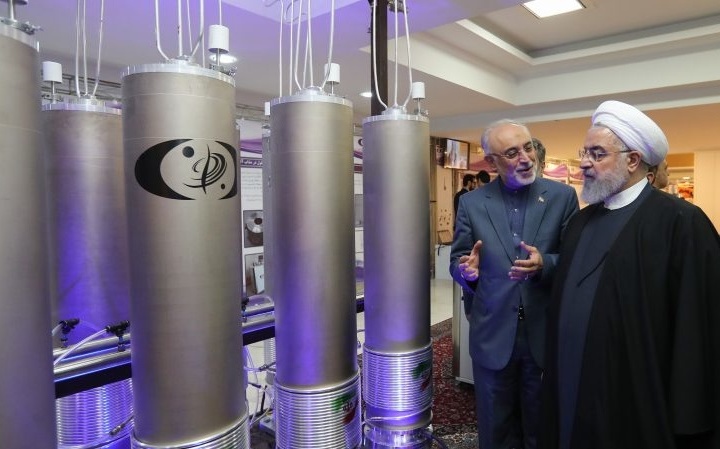President Hassan Rouhani (R) and the head of Iran’s Atomic Energy Organization Ali Akbar Salehi inspecting a nuclear plant, Tehran, April 9, 2019
The International Atomic Energy Agency has expressed “serious concern” that Iran is denying access to two nuclear sites.
The IAEA also reported on Friday that Iran has increased its stockpile of low-enriched uranium by almost eight times.
The 2015 nuclear agreement between Iran and the 5+1 Powers (US, UK, Germany, France, Russia, and China) set a limit of 300 kg (661 pounds) of 3.67% enriched uranium. Tehran gave up its stock of 20% uranium, which can be further enriched to more than 90% for a military nuclear program.
The IAEA said Iran’s stockpile was 1,571.6 kg (3,465 pounds) on May 20. It confirmed that Iran is now enriching uranium to 4.5%, higher than the 3.67% limit in the deal.
After the Trump Administration withdrew from the agreement and imposed comprehensive sanctions in November 2018, Iranian officials said they might suspend commitments if Europe did not establish economic links to bypass the American restrictions.
The European Union announced the financial mechanism INSTEX in January 2019, for trade in Iranian oil and other commodities and goods. But Tehran rejected the arrangement because of EU criticism of Iran’s missile research and development, activities in the Middle East, and alleged involvement in assassination and bomb plots in Europe.
The Rouhani Government began the suspension of commitments in June 2019, including the breaking of the stockpile limits. Iran also installed advanced uranium centrifuges capable of faster production.
See Iran Daily, November 10: “We Can Produce 60% Enriched Uranium”
Access Denied
The IAEA reported that “for over four months, Iran has denied access to the Agency…to two locations”.
A March statement from the IAEA had cited the denial, and also said Tehran had failed to answer questions about past nuclear activities at three sites.
The latest report summarized, “The [IAEA] Director General calls on Iran immediately to cooperate fully with the agency, including by providing prompt access to the locations specified.”
The report indicated that Iran had carried out “extensive sanitization and levelling in 2003 and 2004” of three sites to cover up the extent of activities that might have included pursuit of a military nuclear program.
One of the sites “underwent significant changes…including the demolition of most buildings”.
The report described “the possible use and storage of nuclear material at another location specified by the agency where outdoor, conventional explosive testing may have taken place in 2003, including in relation to testing of shielding in preparation for the use of neutron detectors”.

